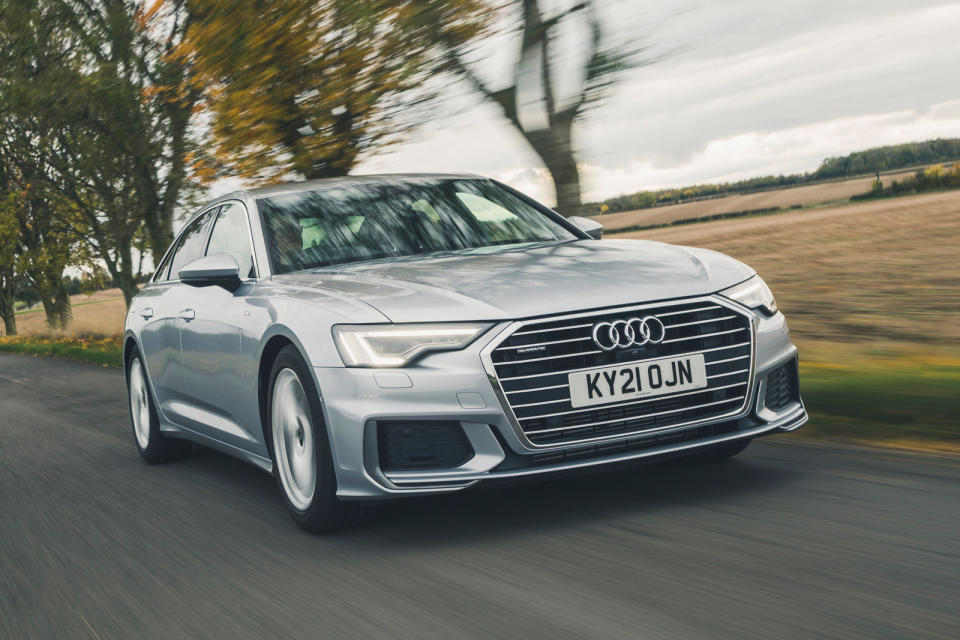Audi A6

You’d expect a technologically innovative brand like Audi to have played a part in the earliest days of the plug-in electrification of the automobile, but looking at how the market for PHEV executive cars from rivals to the Audi A6 has developed over the past decade might give you other ideas.
The modern commercialisation of the breed has been taken on by other companies, so we now associate brands like Volvo, BMW and Volkswagen with PHEV powertrains much more readily.
Should we? Perhaps not. While its rivals may have lately committed with greater intent, Audi certainly dipped its toe with petrol- and diesel-electric powertrains several times over the past decade. It now has the wide range of PHEV offerings you’d expect, but it can also reference a few trailblazing examples you might not have heard of.
Its first petrol-electric model came as early as 1989 in the shape of a 100 Avant Quattro called the Duo. With a five-cylinder petrol engine in the front and a 12bhp electric motor at the rear, this was Audi’s first PHEV – although it was never put into proper series production. The A4 Avant Duo of 1997 did make full series production, but it was overlooked by Europe’s car-buying public.
Among Audi’s more recent ventures with PHEV technology was the Wankel-engined A1 E-tron concept of 2010; and then the Audi A3 Sportback E-tron of 2014 and the Audi Q7 E-tron of 2016, both of which did make the showroom, the Q7 E-tron in petrol- and diesel-electric forms.
Then in 2019, when Audi launched its first series-production electric car, the E-tron moniker became the preserve of its all-electric models, while a coherent family of PHEVs, all labelled TFSIe, was introduced. That family now consists of electrified versions of the A3, Q3, Q5, A6, Q7, A7, Q8 and A8 – and it’s specifically the A6 we’re interested in this week.
Audi A6 line-up at a glance
The A6 model range remains reassuringly broad and extensive. All versions now get an automatic gearbox of some kind; only the base 40 petrol and diesel versions miss out on four-wheel drive as standard; and the trim-level walk-up starts with Sport, ranges up through S Line and Black Edition, and usually tops out with a fully loaded Vorsprung.
Audi A6 design & styling
Good strategic planning has helped to bring Audi’s electrification plans to bear. Between the start of 2017 and the end of 2018, the firm ushered in new-generation models of the A6, A7, A8, Q5 and Q8, all based on the VW Group’s updated MLB-Evo model platform and all therefore ready for the batteries, electric motors and complicated electronic architectures necessary to make a PHEV work.
First shown at the Geneva motor show in 2019, the A6 TFSIe Quattro pairs a 2.0-litre four-cylinder petrol engine with a 141bhp electric motor, both sitting upstream of a seven-speed dual-clutch automatic gearbox and clutch-based Quattro Ultra intelligent four-wheel drive system. Two versions are offered: a 55 TFSIe with 362bhp and 369lb ft, and a 50 TFSIe with 295bhp and 332lb ft. The 55 TFSIe is tuned for more sporting tastes, claims Audi, while the 50 TFSIe has the more comfort-oriented positioning that you might consider Audi’s heartland territory.
While many rival PHEVs have drive batteries mounted under the cabin floor, both A6 PHEVs draw power from a lithium ion drive battery carried under the boot floor. At the car’s introduction in 2019, this battery pack had a total capacity of 14.1kWh and delivered an electric range of 25 miles. But in March 2021, Audi announced an updated battery pack with a total installed capacity of 17.9kWh, boosting the WLTP-verified electric range for the A6 to between 39 and 45 miles (depending on fitted equipment). While 25 miles of range was only an average showing for the original car, the updated version now bests many of its PHEV opponents by granting access to a sub-10% benefit-in-kind tax bracket.
Like most A6s, the TFSIe versions are suspended independently, via multi-link axles front and rear underneath steel coils and passive dampers. Plump for big-selling S Line trim and, among other equipment updates, you get lowered passive sport suspension, which cradles the car 10mm closer to the road surface. Typically, you have to scale the trim hierarchy all the way to a Vorsprung-spec car to get an A6 with adjustable air suspension and ‘dynamic’ active four-wheel steering. However, on the PHEV derivatives, neither of those systems is available.
Both A6 PHEVs do get a heat pump as standard, though, which should usefully boost their operating efficiency in cold weather, and both run with a haptic accelerator pedal that, it’s promised, makes the interaction of the petrol and electric halves of the powertrain more intuitive to manage.
]]>

 Yahoo Autos
Yahoo Autos 